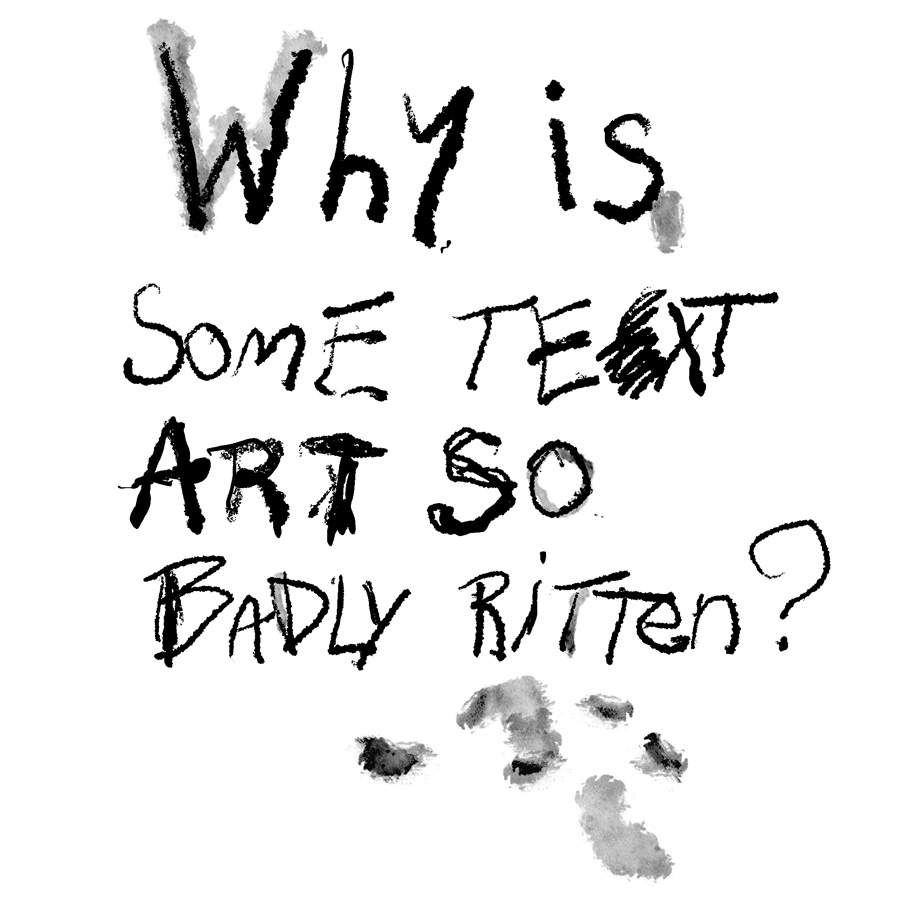The Canterbury Cathedral graffiti controversy.
The ancient walls of Canterbury Cathedral are currently the hosts to an exhibition of art in the form of graffiti-style lettering. The lettering isn’t actually graffiti in that isn’t created by painting directly onto the stone walls of the building, it isn’t created by a bunch of dispossessed youths with time on their hands, and it isn’t illegal It is in fact printed on sheets which are then attached to the walls as transfers using a method that will cause no damage to the building.
The graffiti is in the form of questions that people may want to ask God, such as “Are you there?” and “Where does love come from?”
The exhibition is dividing opinion, and I can understand why.
I think that one of the main reasons why people may find the exhibition offensive is the simple fact that it takes the form of graffiti. As I implied above, graffiti is generally a form of vandalism or violation, and that association is bound to be carried through to the work, which must therefore imply violation of the cathedral. What’s more, because the cathedral is a religious building the graffiti can be interpreted as a form of desecration of a holy site. Graffiti on the walls of a railway station is bad enough, but graffiti inside a church is beyond the pale.
Maybe the church authorities are graffiti is the art form of the downtrodden and the dispossessed
I suppose that the original thinking behind the concept of the exhibition is that it makes a cathedral “relevant” to the modern age and particularly to the youth of the modern age.
Unless they were religiously inclined, very few members of “the youth” would ever dream of going into a church. Churches are dull places (to the youth) and they hold very little of interest to them.
Graffiti is by definition an edgy, anti-establishment, usually illegal youth-centric art form. Put some of it in the cathedral and the youth will come to look at it. That, I assume, is the theory. They may only come to look at it for a laugh, but by stepping over the threshold of the cathedral they’ll have made that first big step in stopping the cathedral being seen as a forbidden, alien and boring zone. Once they are inside the walls of the cathedral the power of the architecture may even encourage the incubation of a nascent transcendent experience.
For me there are a few problems with the exhibition on an artistic level. Art is generally meant to move you in one emotional way or another, with religious art specifically being meant to move you spiritually. Most religious art is refined, as befits art that is created in the service of religion. Like many people I am often moved by the architecture and art and a feeling of transcendence when I enter a church or a cathedral, and I say this as a committed atheist.
The graffiti art in Canterbury Cathedral is however anything but refined and transcendent. I get it that the graffiti art isn’t meant for people who’s minds are mature enough to appreciate refinement or transcendence yet ~ it’s probably meant for unpolished and callow youth. The cathedral authorities are probably employing a bit of condescension somewhere in that justification.
Another way to look at it is that the graffiti art isn’t chiefly aimed at young people at all. Maybe it’s aimed at everybody as a way to signal how the church is “engaged” in the real world, to show how it’s not a fusty old institution dominated by archaic attitudes. Maybe it’s a stab at rebranding.
Part of this engagement in the real world can be seen in the manner in which the questions that form the content of the graffiti were gathered. The questions are the result of workshops held by the artist Alex Vellis who developed the exhibition. The workshops involved consulting with “marginalised communities, including the Punjabi, black and brown diaspora, neurodivergent individuals, and the LGBTQIA+ population”. In the art world several of these marginalised communities are actually far from marginalised: I am a frequent visitor to the major public art galleries in London, and for all of the current decade most of the temporary exhibitions in these galleries have overwhelmingly featured, to the point of tedium, the work of marginalised groups.
So it seems to me that Canterbury Cathedral is to some extent using the “marginalised communities” tag as a way of validating the exhibition and of insulating it from criticism. Interestingly, Canterbury Cathedral’s own website describes the people who collaborated in the project as “ordinary people” (perhaps to imply a form of Everyman) in one paragraph and as “marginalised communities” in the next. Vellis himself is a member of the LGBTQIA+ community.
The questions that made it onto the walls of the cathedral actually don’t seem to have any particular special relevance to marginalised communities, and are generally rather pedestrian everyday theological questions of the “Why are we here?” variety, so I’m again wondering why marginalised communities were specifically involved other than as a way of validating the work or as a sign of gesture politics.
A few final points about the artistic quality of the exhibition.
Some of the lettering in the graffiti is written in styles that are very hard to decipher, probably rendering it illegible to many of the people who try to read it – people such as old people and people for whom English isn’t their first language (such as immigrants and foreign tourists).
A close look at the graffiti will reveal that the lettering isn’t hand-written, as it would be with true graffiti: it’s created using a typeface on a computer. You can see this because in any given piece of graffiti every instance of the same letter is the same. This artwork was created by a graphic
designer sitting at a computer on a desk; the very antithesis of what real graffiti’s all about.
I’ll leave the very last word to the creator of the project, poet Alex Vellis,, who wrote the following very poetic phrase on Instagram in response to a few people (called J D Vance and Elon Musk) who criticised the exhibition:
“… all I can tell you is that @jdvance and @elonmusk both give off small dick energy.”






